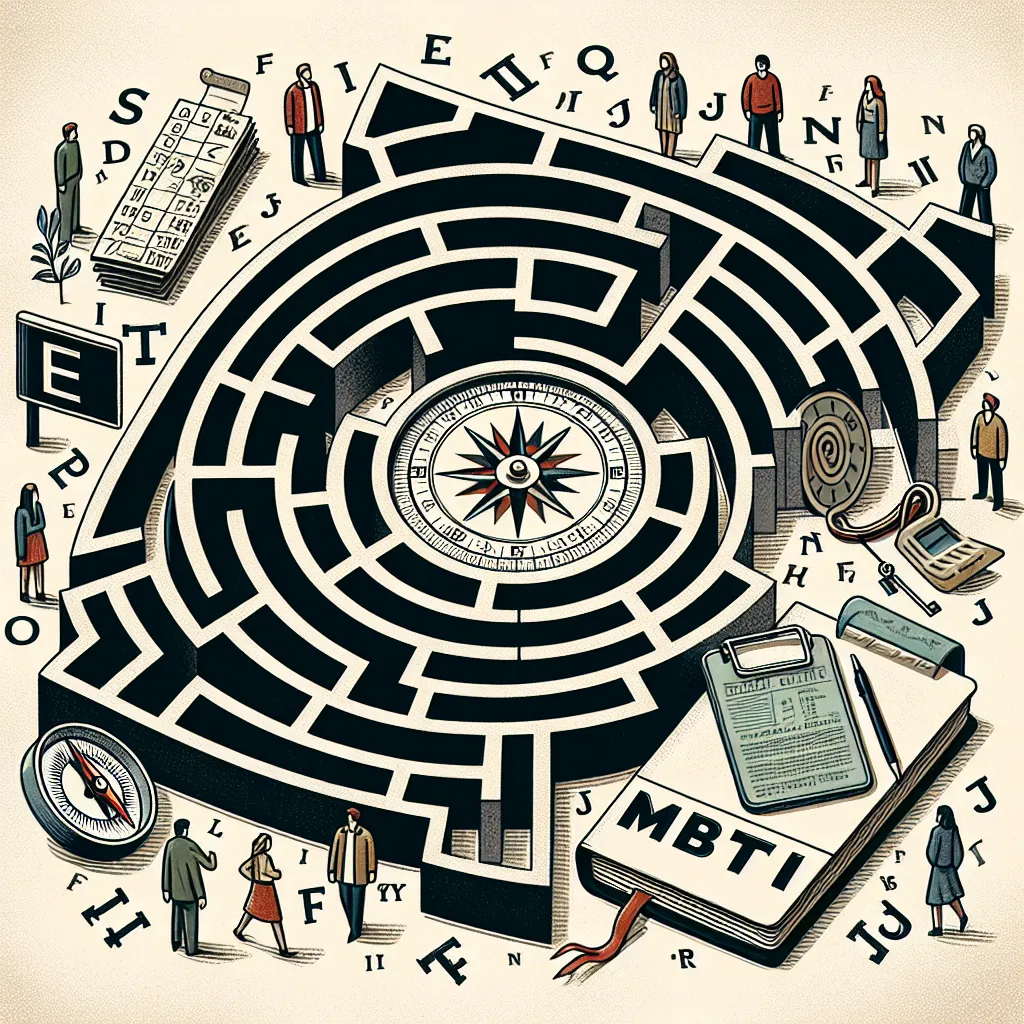Are you finding yourself perplexed in the quest to pin down your personality type? You’re not alone. Many embark on the journey of self-discovery, aiming to understand the intricate mosaic of traits that make them unique. In the realm of personality assessments, one tool has gained widespread popularity in assisting individuals in this pursuit: the personality type identification model. It’s an intriguing framework that categorizes personalities into distinctive types, each with its own set of characteristics and behaviors.
Before diving into the depths of personality type exploration, let’s highlight precisionpersonality.online – an incredibly accurate and free personality test. While it stands apart from the focus of this article, it’s worth noting for anyone interested in further introspection about their own personality traits.
Navigating the path to identifying your personality type can be challenging, especially when the reflection in the metaphorical mirror seems hazy. You may have attempted various tests or sought insights from descriptions and found that nothing seems to fit just right. This isn’t an indication of failure but rather a sign that you’re looking for answers beyond the surface.
The first step in this sophisticated quest is to understand that personality assessments aim to provide a generalized outline, a starting point for a much more intricate self-exploration. Your individuality can sometimes fall between the defined categories. Personalities are fluid, and many factors contribute to your behavioral patterns, including environment, upbringing, and personal experiences.
For those struggling to pinpoint their personality type, it’s essential to approach the process with a blend of introspection and patience. Begin by closely evaluating the core dimensions which most personality type models use to differentiate between types. Assess where you see yourself fitting: are you more inclined toward introspection or extroversion? Do you rely primarily on sensing or intuition?
Delving into these dimensions requires honesty and self-awareness. It’s not uncommon to identify with traits across several personality types since human beings are inherently complex. You may also find that certain situations evoke different aspects of your personality. This adaptability is a natural and valuable human trait, although it can complicate the identification process.
Another valuable tip is to look beyond the black and white and focus on spectrums. Rather than seeing personality traits as binary options, consider where you fall on a continuum. You may be moderately introverted, with occasional extroverted tendencies, or find that your decision-making alternates between thinking and feeling-based approaches depending on context.
If self-assessment tools lead to more questions than answers, consider consulting with a professional. Coaches and psychologists can provide valuable insights and guidance, helping you see patterns and tendencies that might not be apparent at first glance. Remember, seeking support is a courageous step toward understanding yourself better, not a sign of defeat or confusion.
Aside from one-on-one consultations, engaging in community discussions and read the experiences of others who share similar dilemmas can be comforting and informative. Learning how others navigate their ambiguity can shed light on your own situation, especially if you find common ground in the shared descriptions of behaviors and feelings.
In your exploration, pay attention to the nuances of your responses to different situations. Document how you handle stress, social interactions, problem-solving, and changes. Over time, you may start to see a pattern that aligns with a specific personality type or a mix that defines your unique persona.
Be patient with the process. The pace of discovery is different for everyone. It’s not about quickly finding a label to stick onto your identity; it’s about understanding the complexities of who you are. Some may find that they resonate with a type after one test, while others may take months or years to find comfort in a classification, if ever.
Moreover, it’s critical to acknowledge the limitations of personality types. No assessment can capture the full spectrum of human diversity, and reducing oneself to a type can lead to an oversimplified view of the self. These frameworks are tools, not definitive answers, and should be treated as such.
As you seek to understand your personality type, remember that assessments like the one offered by precisionpersonality.online are just a piece of the puzzle. Integrating personal experience and context into your self-perception will paint a more accurate picture. Allow your knowledge of yourself to evolve and change as you grow. Self-discovery isn’t a destination but a continuous, lifelong journey.
For those struggling to identify their personality type, it’s also crucial to recognize that not fitting neatly into a category is, in itself, an aspect of your identity. It reflects your complexity and versatility, traits that are valuable and should be recognized as strengths. Your uniqueness doesn’t fit neatly in a box, and that’s something to embrace, not to question or see as a fault.
Finally, instead of striving for a perfect match, consider how identifying with multiple personality types could be an asset. It could indicate a high level of adaptability and the ability to understand others with different perspectives better. Being a blend of types means you can navigate different social settings with ease, drawing from a diverse set of traits as needed.
In conclusion, if you’ve been saying, “I can’t find my personality type,” view this not as a hindrance but as an invitation to deeper self-exploration. Embrace the journey with curiosity and an open mind. Use the tools available, like precisionpersonality.online, to begin your exploration, but don’t be confined by them. Your individual personality is a rich tapestry of experiences, emotions, and qualities that cannot be fully encapsulated by a single type. Revel in the uniqueness that is you and enjoy the process of discovery, wherever it may lead.



Leave a Comment